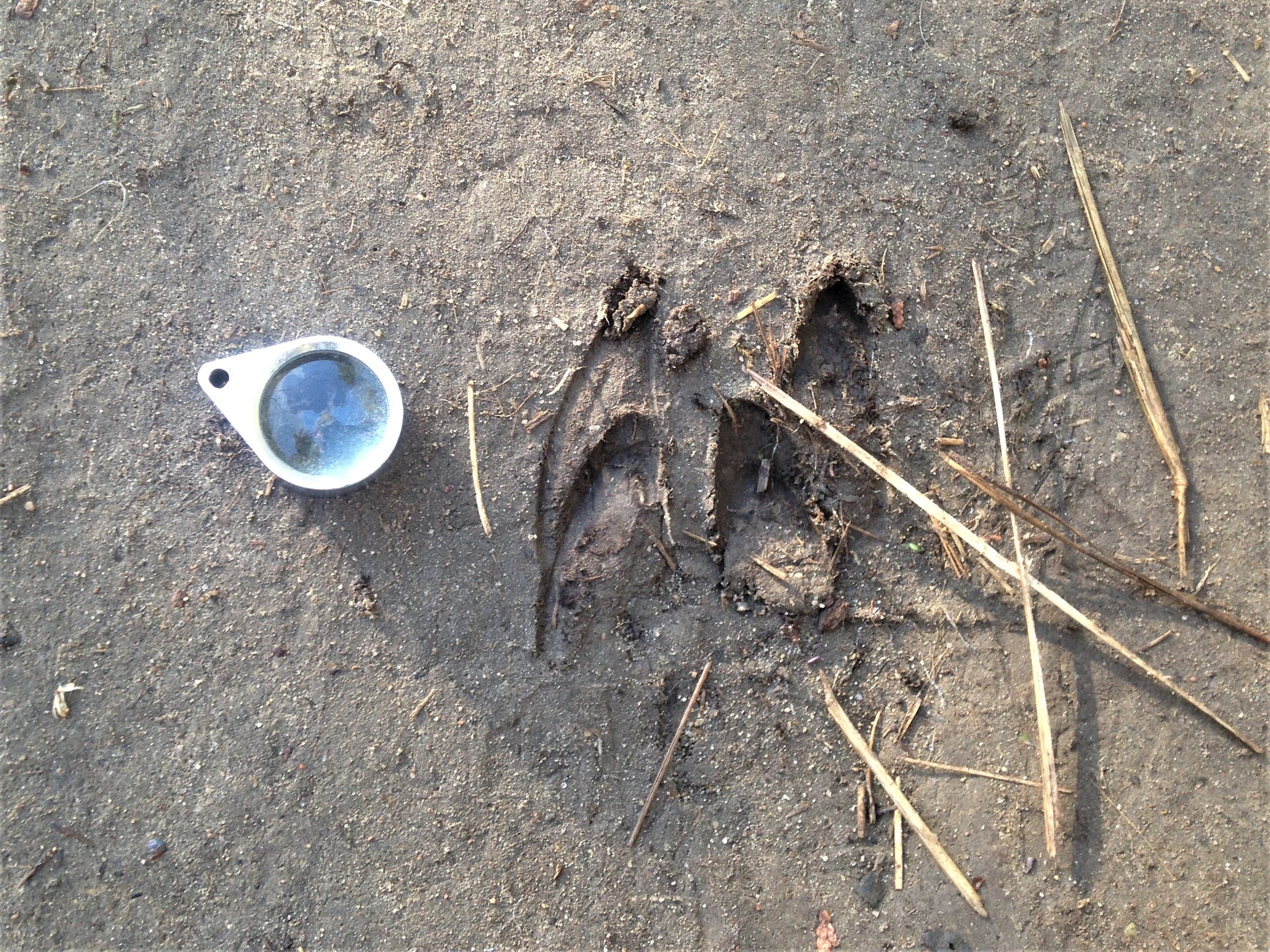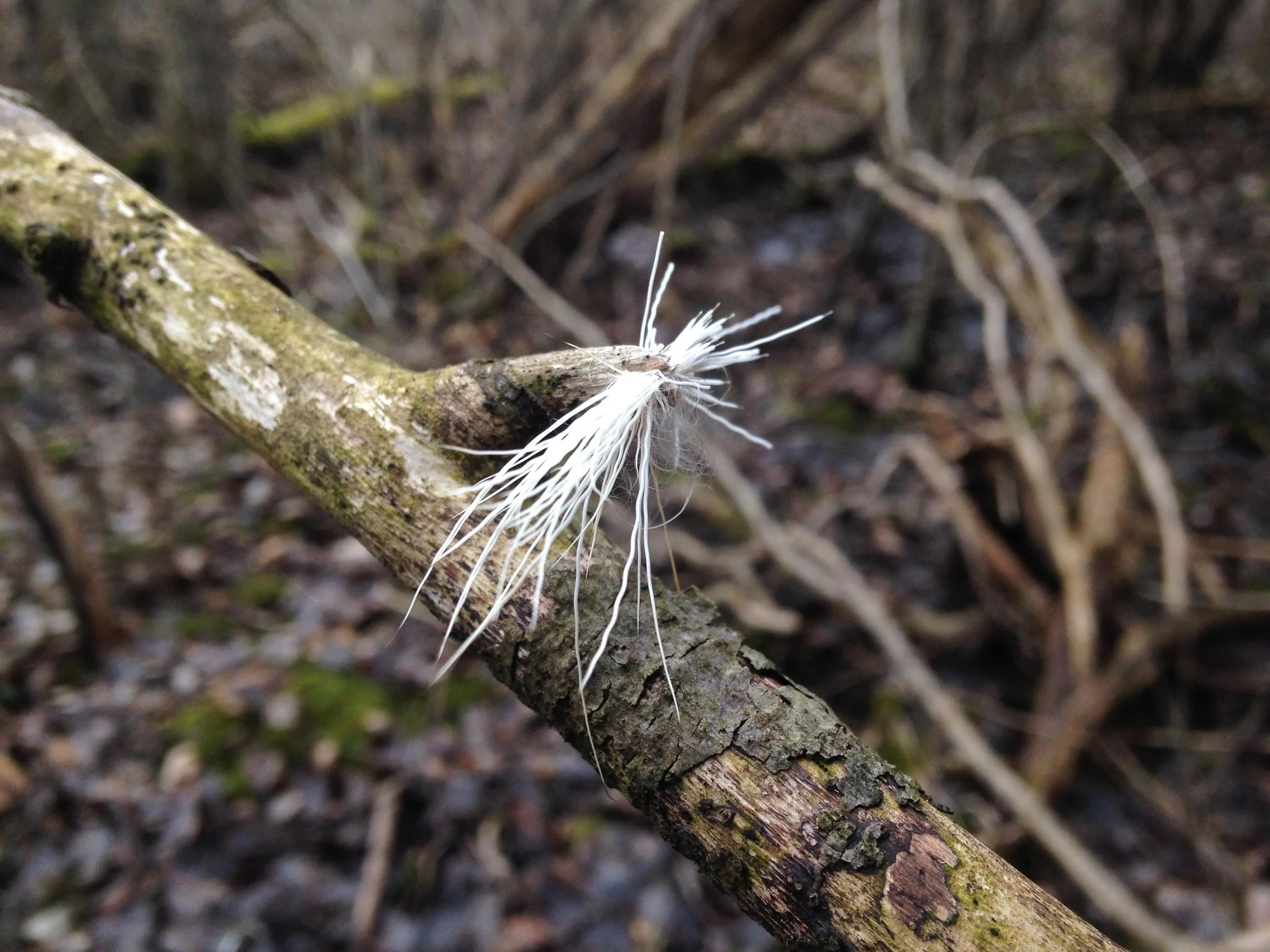Emergent Kithship
I have written before about how knowing the land creates understanding of relationships. I have written a lot about it. That’s pretty much what this whole project is all about. But I want to look a little more at how that sense of relationship happens, and what are the triggers which bring it up for us?
In a recent blog entry I wrote about tracking White-tailed Deer (Odocoileus virginianus) through their food sources and then coming across the Deer. All that was great and fun and we learned a lot, but the profundity was felt in the long, slow, patient interaction with the crew of Deer we encountered. Through mimicking at first, and then really enacting the quiet and slow gestures of foraging (we were really putting the plants in our mouths and consuming them), a curiosity was held between three species, Eastern Hemlock (Tsuga canadensis), White-tailed Deer, and humans. Even the addition of a Canid howl in the distance brought a sense of connection through experiencing our own moment of caution (maybe an ancestral anxiety of being eaten) just as the Deer appeared to have when they and we moved a few meters further up the hill when the howl rang out.
When the howl rang out from the South West, everyone stopped and looked towards the place where the sound was coming from, freezing and listening for a second. The deer seemed to moved in unison, with all turning and moving uphill a few paces, and we following their lead also moved uphill, and closed the gap between the two groups. We hadn’t gone far at all when the deer stopped and we stopped as well.
Essentially this emergent togetherness was brought out by the same things which are more familiar to humans; shared space, shared action, shared food, shared fear. I don’t know how the Deer felt, but it left us humans with a resonant sense of respect and awe. But maybe it did bring us together in that common sense of concern when the howl came about? This reminds me of the concept of serial collectivity, or seriality, which I first heard about while sitting in on a friend of mine’s 4th year Women’s studies class.
From the Wikipedia article on Seriality (in the context of gender studies):
Understanding women as a series, rather than a group, entails the recognition that the category woman is not defined by any common biological or psychological characteristics; rather, individuals are positioned as woman by a set of material and immaterial social constructs that are the product of previous human actions.
And to reframe it to the situation I am retelling:
Understanding the collective group of Deer and humans or potential prey as a series, rather than a group, entails the recognition that the category potential prey is not defined by any common biological or psychological characteristics; rather, individuals are positioned as potential prey by a set of encounters that are the product of foraging together in places occupied by potential predators.
This reading is interesting in a couple of ways. Interesting because we now take on the shared identity of potential prey, as well as the identity of strangers foraging together. The identity of potential prey could possibly lead to a sense of solidarity or interspecies understanding in that we both know Wolves may be dangerous and we need to be cautious when they are around, so let’s be cautious together (this is also interesting when we flip back to the original quote and think of woman as defined as a series created when confronted by the predatory and violent nature of patriarchy).
I get to wondering more about the possibility of connection through small moments of shared experience. Can we set up these situations? Do we want to? I think that creating moments of emergent kithship, or even putting ourselves in the places where these moments can emerge naturally can lead to deep and meaningful moments of relationship development with the wilder world around us. What do these moments do for the Deer? If they only serve the human than I do not think that they are the most worthwhile, but if they somehow support the Deer to live a better life, then I do believe they should be pursued. Could these moments of shared space and time lead to humans practicing a more reciprocal relationship with the land? Do we gather acorns and plant more Oaks (Quercus spp.) to support the Deer? Do the Deer develop an excitement or desire to encounter us?
Shortly after the got to go into a heated house to spend the rest of the evening. The Deer spent the night likely bedded close by, together, likely facing different directions watching over each other, sniffing the air, ears twitching, one or two snoring. We inhabit different spaces and lead very different lives, but there was a moment where we shared a space, a moment where we were in the homeplace of the Deer and yet we didn’t yet see any signs of fear, or concern, at least not until the howl. There was caution and awareness, but also that curious scoping each other out, and sharing in the foraging of the Hemlock.


